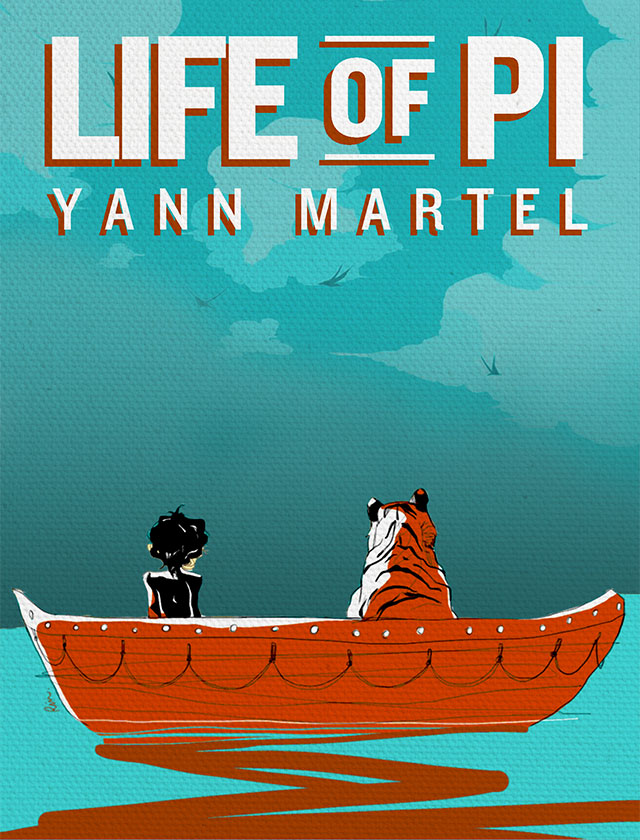Life of Pi
by Yann Martel
Summary: Part One, Chapters 8-15
Summary: Part One, Chapters 8-15
Pi opens Chapter 8 by quoting the well-known adage that the most dangerous animal at the zoo is man. He relates several disturbing instances of grim animal abuses perpetrated by humans. The problem with humans, Pi says, is that we are obsessed with putting ourselves at the center of everything. It is important to understand that humans and animals are essentially different and removed from one another. He has learned this lesson, he says, twice: once from Richard Parker and once from his father. When Pi and Ravi were quite young, their father took them around the zoo, demonstrating the various degrees of danger they should be aware of from each animal. To drive his point home—and to keep his sons from ever doing anything foolish and getting injured—he feeds a live goat to the Bengal tiger in front of them. The impression sticks.
Pi says that the key to running a good zoo lies in getting animals comfortable with the presence of humans. The zookeeper must have a keen intuitive sense of the animal’s needs and comfort levels, and how close a given animal will allow a human being to get without becoming angry or frightened. Pi says that his father had this skill in abundance, and that is why the Pondicherry Zoo was a wonderful place. Pi admits that no matter what, there are always animals who will try to escape from a zoo. He points out, though, that they are escaping from something, rather than attempting to escape to something else. Furthermore, they will always seek refuge at the closest possible area of comfort where they can survive. To make his point, Pi shares a story about a female leopard who escaped from a zoo in Zurich in 1933. Although there was a big search for her, she managed to escape notice and survive in a nearby barn for two months. Pi points out how incredible a feat it is that a tropical cat survived in a Swiss winter for so long, his point being that even large, frightening animals are just creatures motivated by survival and “seeking to fit in.”
... Sign up to continue reading Summary: Part One, Chapters 8-15 >